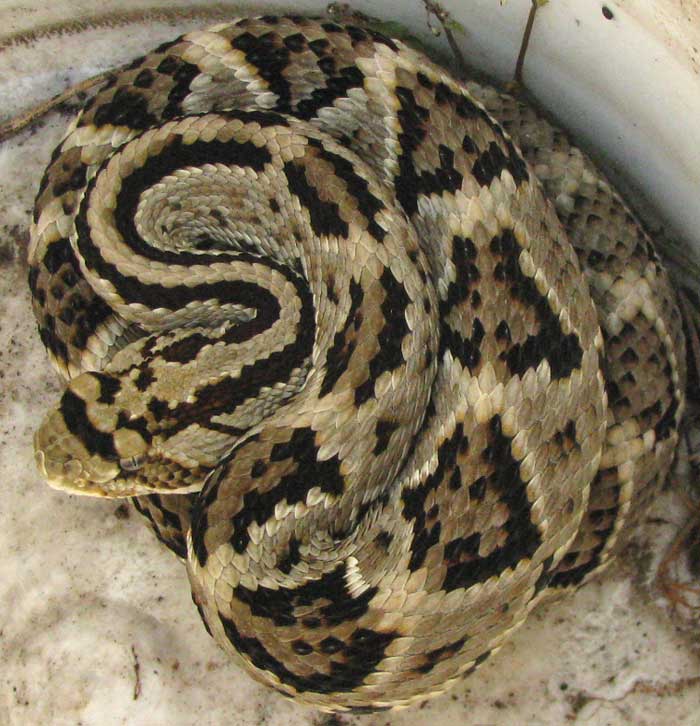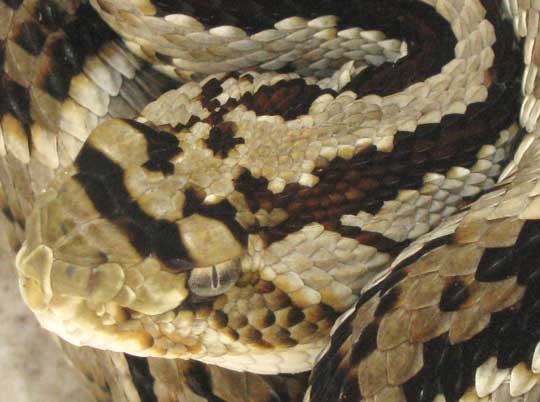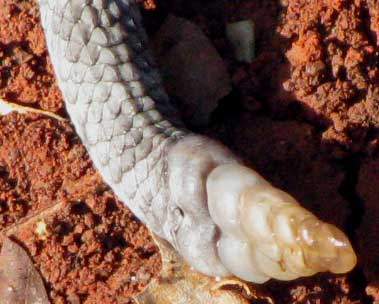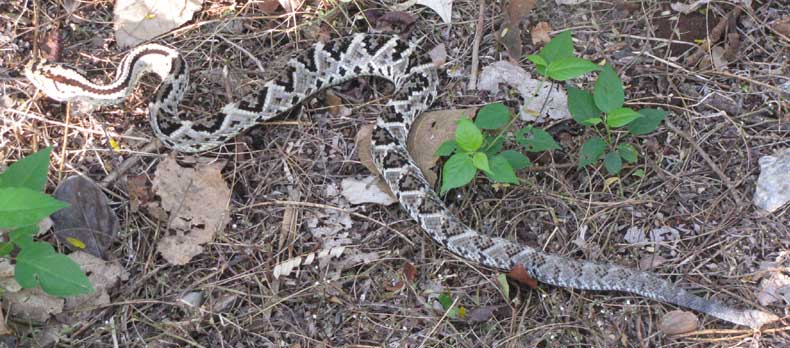Excerpts from Jim Conrad's
Naturalist Newsletter

from the March 6, 2011 Newsletter issued from Hacienda Chichen Resort beside Chichén Itzá Ruins, central Yucatán, MÉXICO; limestone bedrock, elevation ~39m (~128ft), ~N18.52°, ~W95.15°
RATTLESNAKE
Deep in the dry season curled, brown leaves littered the grove's floor as I wandered among trees not paying much attention to where I was going. Maybe a not-consciously noted movement on the forest floor alerted my wool-gathering mind to the 2½-ft-long (76cm) snake laid out before me, one whose diamondback pattern beautifully camouflaged him in the dry-leaf mosaic.
It was the Neotropical Rattlesnake, CROTALUS DURISSUS, a species occurring from northeastern Mexico south to Uruguay and Argentina, the distribution area being highly fragmented so that in some areas where you'd expect it, it's just not there.
We were away from the main tourist area but close enough to be of concern. I made the five-minute hike to the hut to get a bucket with a lid on it to put the snake in, and when I returned he was still there, not far from where I'd left him.
I held my walking stick before him to see how snappish he was, and he hardly seemed to notice. I passed the stick beneath his head, then farther back, until it was about midway beneath his body, lifted him up, and he behaved as if this happened to him every day. Gently I dropped him into the bucket, where he curled up, never once having shown fear or anger and never having rattled his rattles. Sometimes he looked around and once he flattened his head cobra-like, but that was his only hint that he noticed anything unusual happening to him. This mellow behavior is just like what I've experienced among Timber Rattlers back in Mississippi.
That's him curled inside the bucket at the top of this page. A close-up of the head showing an eye's vertical-slit pupil, as well as a pit between the eye and nostril, is shown below:

The pit is a heat-sensing organ enabling the capture of warm-blooded prey in total darkness. Such pits are characteristic of pit vipers -- rattlesnakes, copperheads, water moccasins, cantils, fer-de-lances -- all of which are venomous.
I carried the rattler a couple of kilometers from the visitor area and let him go. You can see him leaving at the bottom of this page.
A close-up of his rattle-bearing tail tip is shown below:

It's untrue that rattler tails bear one segment for each year of the rattler's life. Segments are added to the tail each time the snake sheds. Young, rapidly growing rattlesnakes may shed three or four times a year while older snakes may shed only once. Sometimes if rattles grow too long part of it may break off.
This is the first venomous snake I've seen in this area. I'd been told that rattlers live here, but folks here are so uninformed, superstitious and downright hysterical about snakes -- swearing that nearly every snake encountered is venomous -- that I just wasn't sure they were here until now.
José the shaman says we have two races of rattler here, a "negro," or black, and a "rojo," or red. Ours is the "negro."
